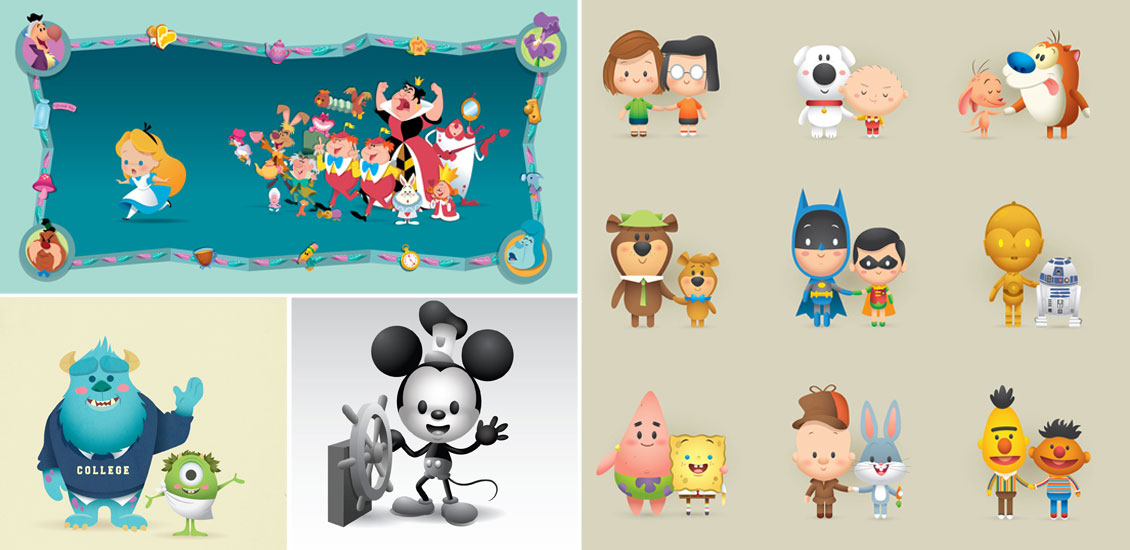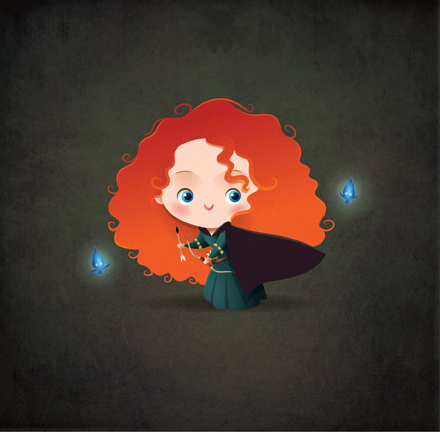Blog

Attack of the Super Cute! Kawaii Creations with Jerrod Maruyama
Super Kawaii!
I was born to know Hello Kitty. The first toy to hit my crib was a Hello Kitty plush, her bright red bow hypnotizing me into a lifetime of adoration. I slept on Hello Kitty sheets, wrote with Hello Kitty pens, told time with my Hello Kitty watch, hauled my books in a Hello Kitty backpack. You can see where this is headed.
Being Japanese, loving all things kawaii* is just in my blood.
*Kawaii (かわいい [kaw͍aiꜜi], “lovable”, “cute”, or “adorable”) is the quality of cuteness in the context of Japanese culture.
So when I was making my picks for this month’s Flickr Pool Showcase, you can imagine my reaction when I saw:

THIS.
Insta-fan!
I clicked over to Jerrod Maruyama’s Flickr pool and gobbled up his work. I contacted him immediately; I needed more! Here are a few moments with:
Jerrod Maruyama
Freelance illustrator and designer Jerrod Maruyama embraces the kawaii style I so adore, often using it to describe the breadth of his work.
“I would use the same word – and I do, often,” Maruyama exclaims. “ To me kawaii means cute in a very Japanese way. I always come back to Hello Kitty and the world of Sanrio as the ultimate definition of “kawaii”. It is a simplification of features and design. But it’s not a baby style. It’s hard to nail down the exact characteristics of a kawaii creation but you tend to know it when you see it.”

Much like me, Maruyama was introduced to the world of kawaii early on, shaping the style he’d later adapt.
“Growing up, I always liked Sanrio products. I was attracted to all the different characters and the small size of all the products. I loved Robbie Rabbit, Tuxedo Sam, Little Twin Stars, Jimmy and Patty, etc. I think that influenced my kawaii design sense.“
Cute may describe his design sense, but Maruyama’s background is hard-core. He holds a degree in Illustration from San Jose State University and has a long history working for well-known clients including Disney, DreamWorks, Facebook, Nickelodeon, Mattel and Lisa Frank.

Valuable lessons have been learned working for these big name clients, which Maruyama has taken into his now full-time, freelance career.
“While I am very passionate about what I do, I have to remind myself that it is a job – I am creating images for someone else’s purpose. I am fortunate enough to work from home, but I am constantly dealing with clients over the phone, through email, on Skype, etc. With bigger companies you tend to deal with many more layers of approval. Feedback comes in waves and versions come and go quickly. Entire concepts can change in a single meeting. You can’t take feedback personally. That is always the challenge when working with any clients. You have to go with it. You have to find a way to look at the revision requests constructively. That’s the real work. Being grumpy about comments or pushing back on revision won’t get you very far. Win the battle but lose the war. The sooner you can accept revisions as part of the process and embrace that as the challenge of working in this industry, the better you will do with big companies and projects. Being pleasant to work with goes a long way when working freelance.”
Always working, constantly creating, Maruyama makes use of feedback from his peers to fuel his work. Besides the world of Sanrio, he gains inspiration from colleagues, as well as Disney movies and Disneyland, the films and characters of Pixar and music.

“I put my work out there and learn from the feedback I receive. I look at other people’s art and constantly look for inspiration online. Sites like Tumblr and Pinterest have made it so easy to view the work of others – and it’s also a lot of fun,” Maruyama notes. “A host of fellow artists inspire me on a daily basis and push me to do better work.”
He reports, “Fellow artists like Joey Chou do some really amazing work and really elevate the kawaii style. He brings a storybook aesthetic to the genre. His work is beautifully crafted and rooted in good design. I love the conceptual work of the animation industry. Disney artists like Brittney Lee and Lorelay Bove do amazing work – a modern take on Mary Blair. There are so many others – Bob Staake, Kevin Kidney, Andrew Kolb, Pascal Campion, Mike Yamada, Victoria Ying, Jeremiah Ketner, Leo Espinosa to name just a few. “
Once inspired, Maruyama gets straight to work, creating his own, original super cute creations.

How does he view the world of kawaii in the realm of art history? “ I’m not sure I really think of it as a movement in art history. I think it’s more part of the design world – and within that world, closely tied to product design. I might even think of it as a specifically Japanese philosophy on appealing design. Time will tell if this approach to characters and merchandise fits into the overall scope of art history as we think of it today. Pop culture is certainly playing a larger and growing role in our modern concept of art. I think eventually it will all get wrapped up in one big, consumer driven movement.”

To me, kawaii superfan, and others pursuing design, Maruyama, says that to go after your dreams, “You have to just do it.”
He notes, “I have a long way to go in my own career as an artist. I certainly haven’t figured out any shortcuts or tricks to getting work or being successful. I am figuring it out everyday I work on a new project. So, don’t wait around for someone to let you in on some secret to success. Don’t waste your time looking for answers – just do it. Work hard. Keep trying to get better at what you do. Show your work and get feedback. Engage with other artists. Look at as much artwork as you can. Be passionate and sincere about what you do and the work will come.”
Jerrod Maruyama | Twitter | Flickr | Facebook | Dribble
